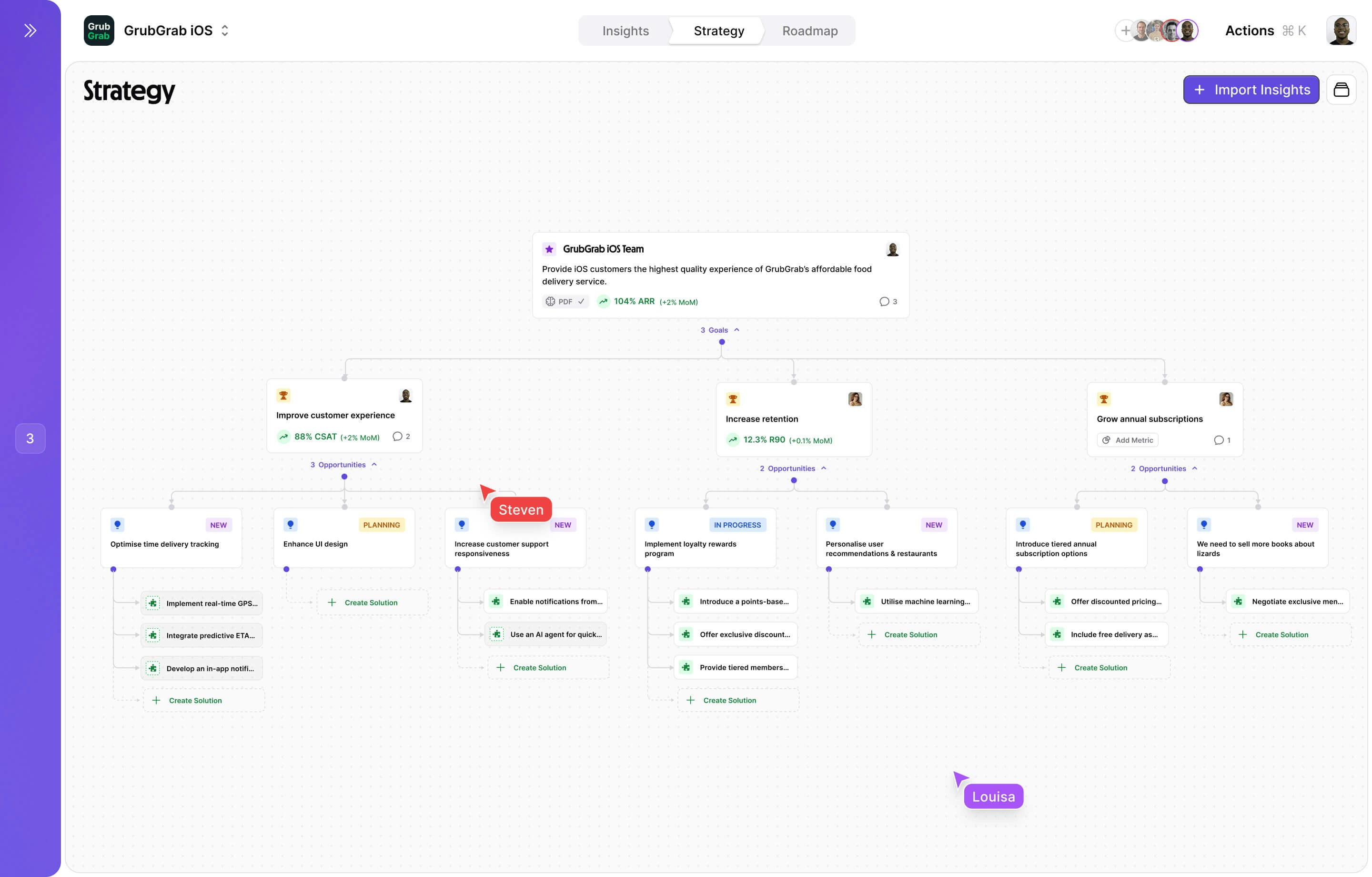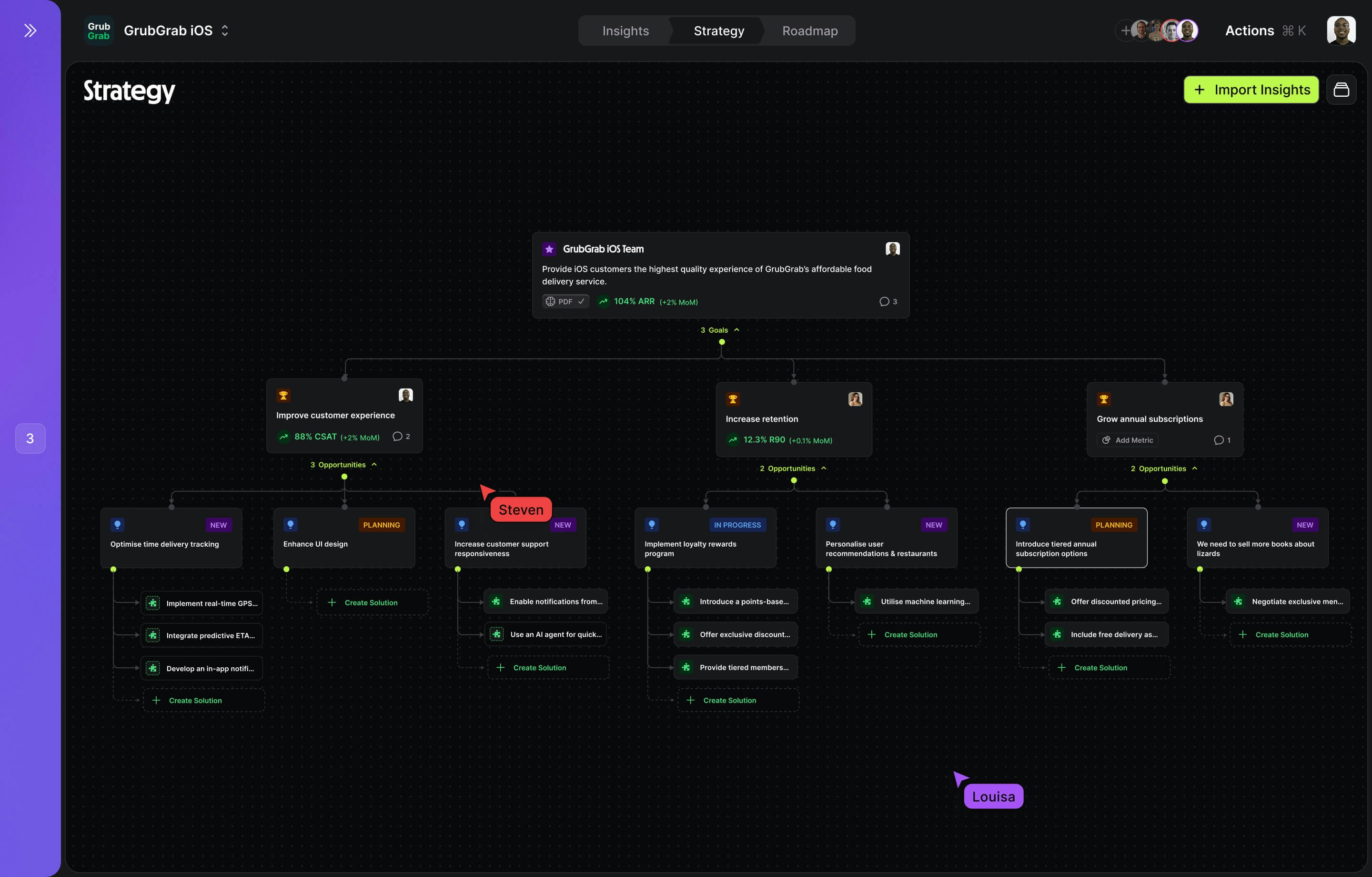
Overview
Squad Strategy brings your product strategy to life through interactive Opportunity-Solution Trees (OSTs). See how every feature connects to user needs and business goals, ensuring your team builds what matters most.The Strategy Map automatically updates as you (or Squad) add opportunities, solutions, and tasks, giving you a real-time view of your product direction.
Understanding the OST framework
Squad uses a hierarchical structure that ensures every piece of work traces back to your mission:Mission
Your north star purpose
Goals
Measurable outcomes
Opportunities
User needs to address
Solutions
How you’ll solve them
Strategy Map interface
Visual hierarchy
The Strategy Map displays your entire product strategy in an intuitive tree structure:Interactive features
- Drag and drop: Reorganize opportunities and solutions by dragging between goals
- Expand/collapse: Focus on specific branches of your strategy tree
- Filter and search: Find specific items using the command menu
- Canvas actions: Create, edit, or view items directly from the map
Creating your strategy
1
Starting with goals
Every strategy begins with clear, measurable goals:
GrubGrab Goal Examples
2
Discovering opportunities
Opportunities represent unmet user needs that, if addressed, will help achieve your goals:
How to identify strong opportunities
How to identify strong opportunities
Good opportunities are:
- Problem-focused, not solution-focused
- Backed by evidence from user research or data
- Sizeable in terms of affected users
- Connected to at least one goal
- User interviews and feedback
- Support ticket analysis
- Behavioral analytics
- Competitive analysis
- Market research
- Weak: “Add a search feature”
- Strong: “Users can’t find their favorite restaurants quickly”
3
Crafting solutions
For each opportunity, generate multiple solutions:
- AI generation
- Solution scoring
Let Squad AI suggest solutions:Opportunity: “Users can’t find vegetarian restaurants”Squad AI suggests:
- 🏷️ Dietary Filter System
- Add vegetarian/vegan/gluten-free filters
- Badge restaurants with dietary options
- Impact: High | Effort: Medium
- 🔍 Smart Search Enhancement
- Natural language search (“vegan pizza near me”)
- Auto-suggest dietary options
- Impact: High | Effort: High
- 📱 Dedicated Dietary Section
- Separate browsing section for dietary needs
- Curated collections by preference
- Impact: Medium | Effort: Low
Collaboration features
Team alignment
Keep everyone on the same page:Ownership
Assign clear owners to each level of the tree
Comments
Discuss strategies directly on the map
Notifications
Get alerts when strategies change
Export and sharing
Share your strategy with stakeholders:- Interactive web view - Read-only link for stakeholders
- PDF export - Static document for presentations
- Miro/Mural - Import to whiteboarding tools
- JIRA sync - Create epics from strategies
Stakeholder views
Create custom views for different audiences:- Executive view
- Product view
- Engineering view
- High-level goals and progress
- Impact on key business metrics
- Resource allocation across initiatives
- Quarterly roadmap alignment
Best practices
Start with why
Always begin with opportunities (problems) before jumping to solutions
Multiple options
Generate 3+ solution options for each opportunity
Regular reviews
Review and update your strategy map weekly
Data-driven
Link opportunities to real user feedback and metrics
